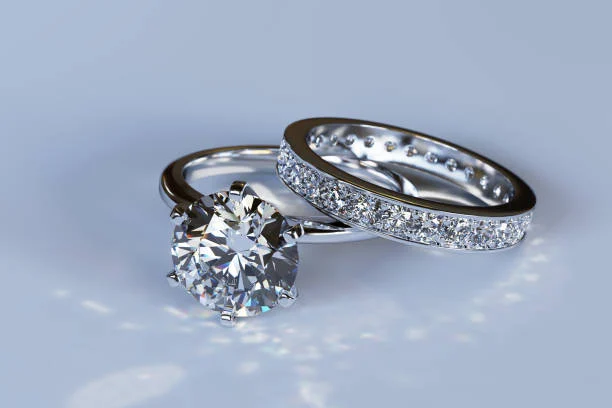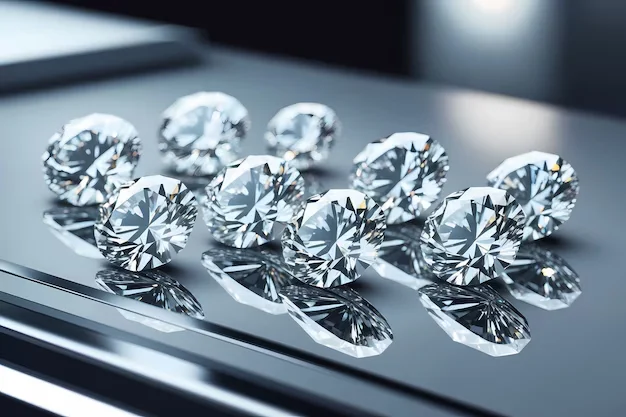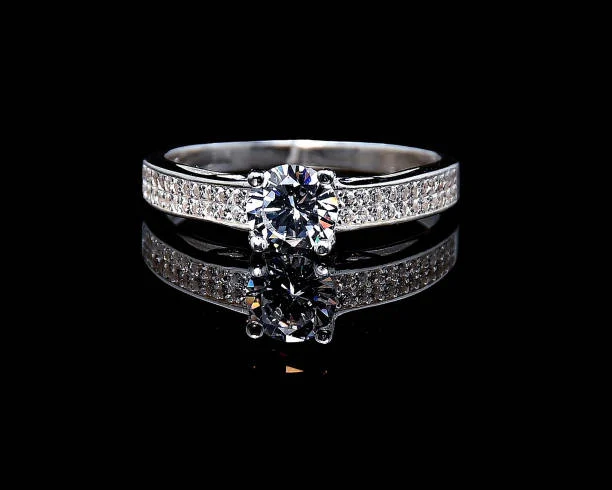Lab-created diamond rings are considered eco-friendly for several reasons. First, they eliminate the need for mining, which is energy-intensive and often harms ecosystems. Secondly, their production generates fewer carbon emissions compared to mined diamonds. Additionally, lab-grown diamonds use sustainable practices, reducing water and land usage. These diamonds can be created using renewable energy sources, further decreasing their environmental impact. By supporting the lab-created diamond industry, consumers can help reduce the destructive effects of traditional mining on local communities and wildlife. The traceability of lab diamonds also ensures ethical sourcing. Lastly, the overall environmental footprint of lab-created diamonds is smaller than that of mined diamonds.
Why Lab-created Diamond Rings are Eco-Friendly

Lab-created diamond rings are eco-friendly because they bypass the harmful environmental impacts of mining, such as habitat destruction and water pollution. Their production consumes less energy and generates fewer carbon emissions compared to traditional diamond mining. These diamonds are often made using renewable energy sources, further reducing their environmental footprint. Additionally, lab-grown diamonds require fewer natural resources like water and land. By choosing lab-created diamonds, consumers support a more sustainable and ethical alternative. Overall, these diamonds offer a greener, more responsible choice.
Lab-created Engagement Ring Styles

If you’re looking for Lab-created diamond engagement rings with Eco-friendly and innovative designs. Here are some stunning and matchless beauty engagement rings.
1. Solitaire Rings: Pure and simple, next is the classic, eternal choice of a solitaire ring, with a centrepiece being an invented diamond, but the band simple.
2. Halo Rings: It is a lab-grown diamond, and the ring is surrounded by a circle of smaller diamonds or gemstones that feature as the centre stone, which adds extra sparkle and brilliance.
3. Trillion Rings: It is often used to symbolise the relationship’s past, present, and future. A three-stone ring boasts three lab-grown diamonds
4. Pave Rings: Here, in a pave ring, small lab-created diamonds are closely set to cover the surface of the band; it produces a sparkling textured look.
5. Bezel Rings: A bezel ring consists of a rim or bezel that runs around all the diamonds and is set into a lab-created diamond, thus hiding it beneath a neat and streamlined aesthetic.
Lab-Created Diamonds vs. Natural Diamonds: Which Engagement Ring Is Right for You?

When choosing between lab-created diamonds and natural diamonds for an engagement ring, it’s important to consider factors like budget, environmental impact, and personal preferences. Lab-created diamonds are often more affordable, providing a larger, high-quality stone for the same price. They are also eco-friendly, as their production avoids the environmental damage caused by mining. On the other hand, natural diamonds carry a sense of tradition and rarity, often appealing to those who value their geological origins. Both types of diamonds are chemically and physically identical, making the decision based on ethical or personal values. Lab-grown diamonds also offer traceability, ensuring ethical sourcing. Ultimately, the right choice depends on your priorities—whether it’s sustainability, cost, or the sentimental value of a natural gem.
Benefits of Lab-grown Rings

- Lab diamonds are made through advanced technology that guarantees equal quality and duplication of similar features, unlike natural occurrence diamonds where the quality and outlook can differ.
- However, the cost of lab-made diamonds is relatively low, as compared with natural diamond ones. Hence, it is an inexpensive commodity for this market as they are more available to be offered to those who may need a quality diamond product at a lower price.
- Lab-grown diamonds are grown in all kinds of hues, such as pink, yellow, blue, and green, to create unique and custom colour pairs.
- It can be customized as per your preference.
- Also it has a sustainable option since it does not deplete reserves and reduces the necessity of mining. Lab-grown diamonds can also be reused to make them a renewable source for future generations.
Natural Diamond Rings

Natural diamond engagement rings are one of the very traditional yet very classy options in terms of elegance, sophistication, and a degree of uniqueness. At the same time, consider a natural diamond as an engagement ring. Here are some key points you must know before you purchase.
Benefits
- Each natural diamond carries unique features, which are as inclusions, color, and cut. This makes the stone genuinely a one-of-a-kind article.
- Hence, they are very expensive because natural diamonds are rare.
- Natural diamonds have a history and tradition of a century, and many people consider them an element of romance and commitment.
- The value of natural diamonds is usually preserved over the years and increases with time, hence an investment.
Also Read: Unique Engagement Rings: Stand Out with These One-of-a-Kind Designs
Conclusion
In conclusion, lab-created diamond engagement rings offer a sustainable, ethical, and affordable alternative to traditional mined diamonds. They are a smart choice for environmentally conscious consumers, as their production significantly reduces ecological harm, carbon emissions, and resource depletion. With the same beauty and durability as natural diamonds, lab-grown options provide a guilt-free way to celebrate love. Whether prioritizing sustainability, cost, or ethical sourcing, lab-created diamonds allow couples to make a meaningful and eco-friendly choice for their future.




One Response